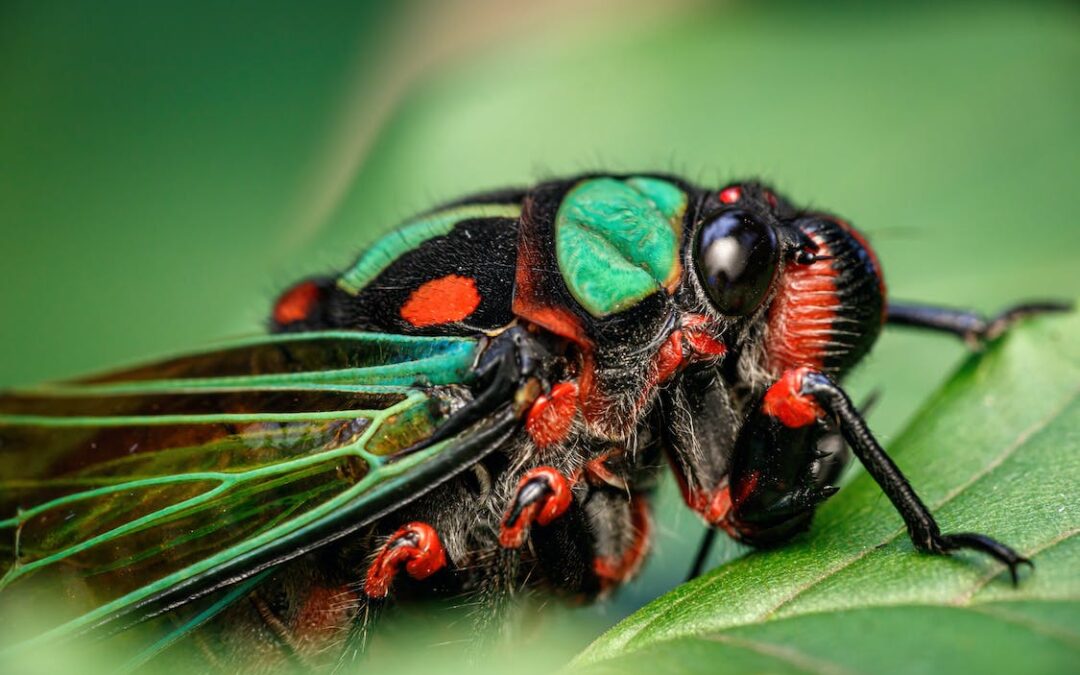The dog days of summer are upon us, and with them come the unmistakable hum of cicadas. While their mating calls are a symphony of summer, the presence of these insects can pose challenges, especially for young trees and shrubs. Here’s a comprehensive guide to cicada pest control in 2024 to help you enjoy a serene outdoor environment.
Understanding Cicadas and Their Impact
Dog Day Cicadas: The dog days of summer are synonymous with the emergence of dog day cicadas. These annual cicadas make their appearance every summer, and their loud mating calls are a quintessential part of the season.
Periodical Cicadas: In contrast, periodical cicadas, appearing every 13 or 17 years, create a unique phenomenon. When they emerge, they can significantly impact young trees and plant roots, posing a potential threat to the health of your outdoor greenery.
Identifying Cicada Nymphs and Their Behavior
Cicada Nymphs: Cicadas start their life cycle as nymphs, residing underground for years before emerging as adults. The nymphs feed on plant roots, making young trees particularly vulnerable to their presence.
Tree Sap and Damage: One telltale sign of cicada infestation is the appearance of tree sap on branches. The feeding habits of cicada nymphs can weaken the trees and hinder their growth. Preventing cicadas from causing extensive damage to young trees is crucial for maintaining a thriving outdoor landscape.
Practical Tips for Cicada Pest Control
-
Early Morning Vigilance: Conduct a thorough inspection of your outdoor spaces, especially early in the morning when cicadas are less active. Look for nymphs, exoskeletons, and signs of sap on tree branches.
-
Wear a Hat during Yard Work: When engaging in yard work, wear a hat to protect yourself from cicadas. This simple precaution can minimize the chances of cicadas getting entangled in your hair.
-
Lawn Mower Awareness: Be cautious while mowing the lawn, as cicadas might be present on the grass. A careful approach to lawn maintenance can prevent unnecessary harm to both you and the cicadas.
-
Planting Strategies: Consider planting young trees away from known cicada breeding grounds. This strategic placement can minimize the impact of cicadas on the health of your greenery.
Effective Cicada Control Measures
1. Natural Predators: Encourage natural predators like birds to frequent your outdoor space. Birds feed on cicadas, helping to control their population and protect your trees.
2. Pool and Hot Tub Covers: If you have a pool or hot tub, keep them covered when not in use. Cicadas are attracted to water sources for laying their eggs, and covering these areas can deter them.
3. Cicada-Resistant Plants: Opt for plants that cicadas find less appealing. This can be an effective long-term strategy for preventing cicadas from laying their eggs in your garden.
4. Professional Assistance: In severe infestations, seeking professional pest control services specialized in cicada management can provide targeted solutions to rid your outdoor space of these buzzing insects.
In summary
While the dog days of summer bring the lively chorus of cicadas, proactive measures can help you strike a balance between enjoying their presence and protecting your outdoor haven. By understanding their life cycle, identifying potential threats to young trees, and implementing practical cicada control strategies, you can ensure a tranquil summer landscape in 2024. So, put on that hat, inspect your surroundings, and take the necessary steps to coexist harmoniously with these fascinating insects.

